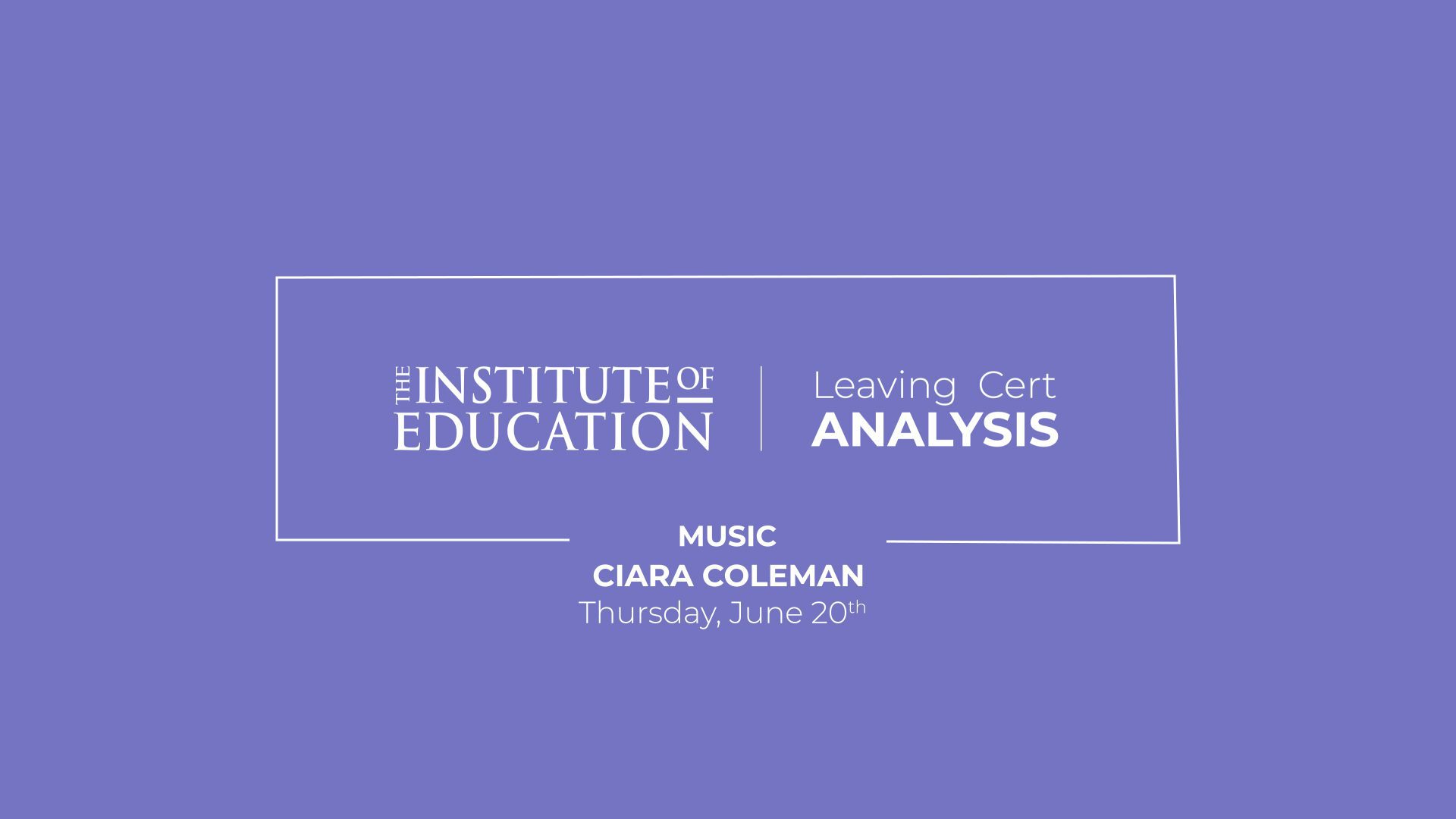Reaction to 2024 Leaving Certificate Music (Higher Level) by Ciara Coleman, Music teacher at The Institute of Education.
- A student friendly paper with clearly identifiable selections.
- A composition without an upbeat will have them feeling upbeat about their compositions.
Listening Paper (Core)
Leaving Cert Music students will have been mostly happy with a very balanced and user-friendly Listening paper this afternoon. While there is no doubt that there will have been an initial groan to see Gerald Barry’s Piano Quartet No 1 as the focus of Question 1 (worth 25 marks), this question was in fact very manageable for students who had really put in the effort to get to grips with the various sections of this work. While some of the C sections of the Barry question often trip students up on account of sounding somewhat similar, the C sections featured here were instantly recognisable, as were the other sections featured in the question. The questions on musical features, compositional techniques and comparative questions will have come as no surprise to students who have done detailed score analysis and studied previous papers.
The remaining set works questions were similarly manageable and designed to reward students on what they will have focused on in their ongoing study; there were no nasty surprises here. While some students may have been surprised to see that the Bach question focused mainly on the chorale, there was a chance to demonstrate their knowledge of Movement 1 at the end of this question. The remaining focus on instrument identification and cadences will have settled the nerves, as will the chance given to provide an explanation of the Tierce de Picardie at the end of the chorale.
The Queen question was similarly fair with a focus on features of the accompaniment and word painting in Verse 2. A small dictation concluded this question and students who listened carefully to the previous two bars will have found clues there for the taking!
Finally, the Tchaikovsky question was again mostly student friendly. Students should have had no trouble identifying the Strife theme and should have been comfortable with describing features of that theme. The slightly more detailed questions on the canon which follows the initial statement of Strife may have required a little more thought, but these were still manageable for the well-prepared student.
With regards to Irish music, students will have been happy with the dance question and may have found the form identification question slightly more challenging, although this question was set in isolation to the others so that students could really focus on the form alone. Mícheál O Súilleabháin’s effervescent Oíche Nollag will have got the toes tapping for the question on fusion! There was a choice of five essays on the Irish music essay section and the choices were wide ranging and nicely open. Again, students were being given the opportunity to demonstrate what they knew here.
The Aural Skills question tests students’ ability to respond to music they may not be familiar with, or to consider covers of well-known songs and make comparisons between them. In this case students were asked to do both, with the Beatles being the focus here: students were presented with a mix of original and covers, including Eleanor Rigby, Blackbird and Come Together. Students will have been relieved that there was no dictation included in this question, with a focus instead on features of accompaniment, time signatures and texture.
All in all, this was a fair and balanced paper with plenty of opportunities for students to demonstrate their knowledge of both their set works and music more generally.
Composing Paper
Unlike the Listening Paper which has no optional questions, students in the composing paper choose one melody and one harmony from a choice of three, respectively. The majority of students will attempt Question 1 (Continuation of a given opening) and Question 5 (Composing bass notes and chord indications to a given tune). In the case of this year’s exam, the positives outweighed the negatives, and students will have been able to build on their composing knowledge from their two years of study.
Question 1 was a D major melody in 3/4 time and somewhat unusually for a simple time signature in a major key, there was no upbeat. The rhythm of this melody comprised mainly crotchets and quavers, although there was a hint of syncopation in bar 3, and the discerning student would have spotted that and developed it later on. The range of a seventh here was also narrower than might have been expected but students will have known to extend this range to create a beautiful shape and structure to their melodies. The crotchet rest and use of repeated notes at the end of the given opening provided further scope for development.
Question 5 was in the relative minor of B minor and again used a simple time signature, in this case 4/4 time. There will have been much relief that the cadences were easily identifiable and that the given bass line was triadic and on the beat. While students will have had to think slightly outside the box in bars 7-8, the chord progressions were mostly straightforward with plenty of viable options throughout. As long as students followed the rules that they have studied regarding strong progressions, and written a solid bass line, they will have had the chance to do very well here.

